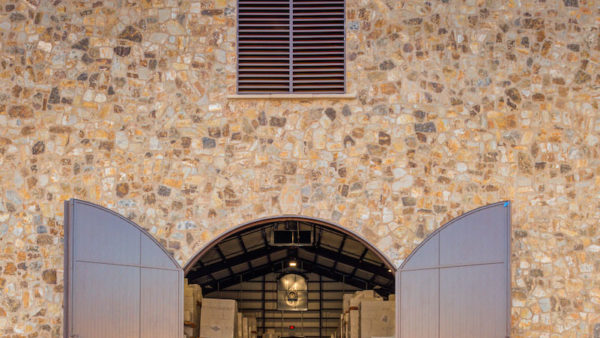Transcending Boundaries: The Beauty and Innovation of Steel and Glass Architecture

In the world of modern architecture, few combinations are as captivating and transformative as steel and glass. The fusion of these materials has given rise to architectural marvels that redefine the boundaries of design, functionality, and aesthetics. In this exploration of steel and glass architecture, we delve into how these two elements are connected, what glass symbolizes in architectural design, the renowned architects who have embraced glass, and the methods used to attach glass to steel beams.
How is Glass Connected to Steel?
Glass and steel, when combined, create a harmonious partnership that merges strength with transparency. In steel and glass architecture, glass is often used as the cladding material for the building envelope, allowing natural light to flood the interior spaces. The glass panels are typically mounted on steel frames or curtain walls, creating a seamless transition between the interior and exterior while ensuring structural integrity.
Steel’s structural properties, including its strength, durability, and versatility, make it an ideal choice for supporting the glass elements. Steel beams and columns provide the necessary framework to hold large expanses of glass in place, allowing architects to design buildings with open, light-filled spaces.
What Does Glass Symbolize in Architecture?
Glass in architecture carries symbolic significance that transcends its utilitarian function. It represents transparency, openness, and a connection to the surrounding environment. Glass allows occupants to engage with the outside world while remaining sheltered within the building’s embrace. It symbolizes a departure from traditional, opaque building materials and a shift toward designs that prioritize visual connections and a sense of space.

Furthermore, glass symbolizes innovation and modernity. Architects who incorporate glass into their designs often seek to push the boundaries of what’s possible in architecture, creating structures that challenge conventional norms and captivate the imagination.
Architects Who Embrace Glass in Steel and Glass Architecture
Several architects have gained fame for their innovative use of glass in their architectural designs. One such visionary architect is Mies van der Rohe, renowned for his minimalist approach to architecture. His iconic Farnsworth House, completed in 1951, is a masterpiece of steel and glass. The house features floor-to-ceiling glass walls supported by slender steel columns, blurring the line between the interior and the surrounding nature.
Another prominent architect celebrated for his glass-centric designs is Philip Johnson. His Glass House, completed in 1949, is an architectural icon. It is a testament to the purity and simplicity of steel and glass, where transparency reigns supreme. The Glass House’s innovative use of materials and its integration with nature set the stage for many future glass-centric architectural endeavors. The influence of glass-centric architecture is not limited to iconic buildings; it also plays a significant role in modern home design and real estate staging. Floor-to-ceiling windows, open layouts, and the integration of natural light have become key selling points in today’s market.
In line with this, home staging has evolved to emphasize the beauty of light-filled spaces and sleek designs that create a seamless flow between indoor and outdoor environments. By highlighting a home’s openness and the way it interacts with natural surroundings, staging professionals can transform spaces into modern oases that resonate deeply with potential buyers. This approach is especially effective when enhanced by minimalist decor and carefully selected furnishings, allowing the architecture to take center stage. Decorus excels at leveraging these principles in home staging. With their expert touch, a property can be transformed to reflect a sense of harmony between the home and its environment. By embracing natural light and strategically placing furniture, it accentuates the openness and transparency of glass-centric spaces. For versatile and functional staging solutions, designers often incorporate flip tables from Hurdleys Office Furniture, which provide flexibility while maintaining a clean, modern aesthetic.
Whether staging a contemporary home with expansive windows or a more traditional setting, they ensure that every detail aligns with the architecture’s vision. Their staging process not only beautifies the space but also creates an emotional connection for buyers, making it easier for them to envision living in the home. This thoughtful approach is key to ensuring a quicker and more profitable sale.
Attaching Glass to Steel Beams

The process of attaching glass to steel beams requires precision, engineering expertise, and attention to detail. Here are some common methods used in steel and glass architecture:
1. Structural Silicone Glazing (SSG)
Structural Silicone Glazing is a popular technique for attaching glass to steel frames. It involves the use of a high-strength silicone sealant that not only bonds the glass to the frame but also provides structural support. This method creates a clean, frameless appearance, enhancing the aesthetic appeal of the building.
2. Curtain Wall Systems
Curtain wall systems are widely employed in steel and glass architecture. These systems consist of a grid of vertical and horizontal mullions that support the glass panels. They are designed to withstand wind loads, seismic forces, and other environmental stresses while providing a sleek and modern look.
3. Bolted Connections
In some cases, glass panels are directly bolted to steel frames or beams using specialized hardware. This method offers robust structural support and is often used in applications where transparency is desired but with a more industrial aesthetic.
4. Tension Cables
Tension cables can be used in conjunction with steel and glass construction to suspend glass panels or create intricate designs. This method allows for a sense of lightness and elegance in architectural compositions.
In conclusion, steel and glass architecture exemplifies the union of strength and transparency. Glass symbolizes innovation, openness, and a connection to the environment, while steel provides the structural support necessary to bring these visionary designs to life. Architects like Mies van der Rohe and Philip Johnson have pushed the boundaries of what’s possible with steel and glass, inspiring generations of designers to embrace these materials in their own creations.
The process of attaching glass to steel beams is a testament to the precision and engineering expertise required in modern architecture. Structural Silicone Glazing, curtain wall systems, bolted connections, and tension cables are among the methods used to achieve the desired aesthetic and structural integrity.
As we continue to explore the possibilities of steel and glass architecture, it’s evident that this dynamic combination will remain at the forefront of innovative and awe-inspiring building design, transcending boundaries and redefining our architectural landscape. In addition to glass features, you may visit http://peelandstickwallmurals.com/ to find the perfect wall art for your space.
To discover why architects love Ecosteel and how they integrate steel and glass in their designs, read Why Architects Love Ecosteel.